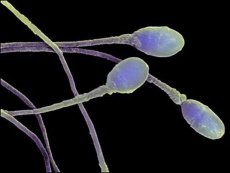Scientists will soon create a male contraceptive for men
Last reviewed: 17.10.2021

All iLive content is medically reviewed or fact checked to ensure as much factual accuracy as possible.
We have strict sourcing guidelines and only link to reputable media sites, academic research institutions and, whenever possible, medically peer reviewed studies. Note that the numbers in parentheses ([1], [2], etc.) are clickable links to these studies.
If you feel that any of our content is inaccurate, out-of-date, or otherwise questionable, please select it and press Ctrl + Enter.

Employees of the Medical School of Biomedical Sciences at the University of Monash found that spermatozoa can be "rendered harmless" by only one mutation.
Studies were conducted in collaboration with scientists from the University of Newcastle, the Institute for Medical Research in Australia and the University of Cambridge. The article of scientists is published on the pages of the journal PLoS Genetics.
Scientists managed to find out that the RABL2 gene, providing the motor activity of the tail of the sperm, as a result of mutations can provoke male infertility (the ability of sperm movement is lost, and also the production of sperm).
Professor Moira O'Brien from the school of Monash University, as well as a team of specialists created a mutation in this gene, depriving the spermatozoa of the supplied "fuel", and hence the ability to move.
Experiments scientists put on rodents. As a result, it was found that due to mutation, the tail of spermatozoa shortened by 17% compared to the normal state, and the production of sperm decreased by 50%. All animals that were affected by these changes lost the ability to fertilize, because their spermatozoa lost the ability to swim and move. Namely, the ability to move, and is the key to successful fertilization.
By the way, this gene is found in the kidneys, brain and liver.
Thanks to the findings, experts are considering the creation of a contraceptive for men that would reduce the motor activity of spermatozoa, and, accordingly, their ability to fertilize.
Scientists hope that they will find a way to create a drug with such a set of functions, but without irreversible consequences. Also, experts are interested in the effect of the drug on other organs, where the activity of the RABL2 gene was noted.
"Many of the basic processes of sperm development occur at lower levels in other organs of the body. Thus, a more complete picture of the idea of a person will give an opportunity to treat infertility, as well as to fight other diseases, "says Professor O'Brien.
